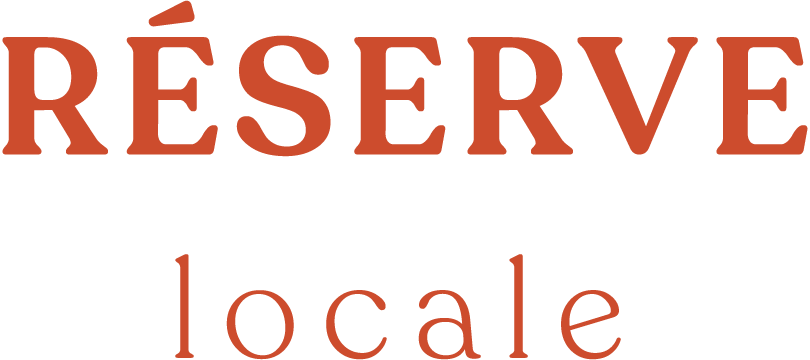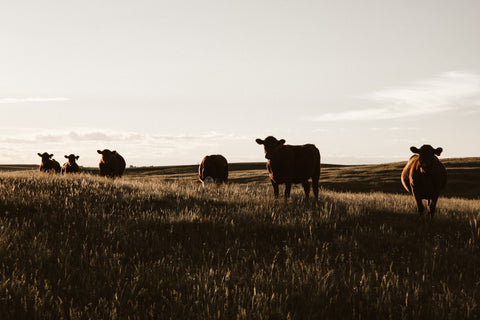Since the start of the 21st century, consumers like you and me have become more and more interested and curious about their food. They ask more questions, learn more and also change their food choices. The industry therefore quietly adapted and continues to do so today. Indeed, it is more transparent, the offer of organic food has grown exponentially and food standards in each country have greatly evolved. However, the presence of antibiotics and growth hormones in our animal agriculture products is still an issue that raises questions among consumers. Many people are still unaware that these substances are used, many are poorly informed, some do not really understand the reasons behind their use and others try to avoid them at all costs. Difficult to find your way? No problem, we’ve gone through the scientific literature on this subject for you.
Why does the industry use antibiotics and growth hormones?
The food industry is evolving so much that even those who have studied it for years are discovering new facets of it every day. So let's start at the beginning. What are antibiotics and growth hormones and why are they used in the meat industry? Antibiotics are substances administered in the consumer meat industry to prevent and treat bacterial infections, to stop bacteria from multiplying, and to promote the growth of the animals we eat. These have been used in the meat, poultry and fish industry for a long time. Indeed, the administration of antibiotics in a curative manner is necessary and when an animal is treated with an antibiotic, a withdrawal period is required before it is put back on the market. The major problem in the animal meat industry is rather the daily administration of antibiotics in a preventive manner. When it comes to hormones, the story is a little different. In Canada, these are only used in beef cattle. Hormones, whether natural or synthetic, stimulate the growth of lean tissue, thereby reducing the fat content in the animal. Consumers therefore have access to less fatty and less expensive meat. It is important to understand that like us, animals naturally produce hormones. It is therefore impossible to consume meat without hormones since the animal in question produces them naturally. However, an animal can be raised without added hormones.
The effects on our health
Now, why is the use of these products so questioned? One of the major issues that concerns the scientific community is the appearance of bacteria resistant to antibiotics in humans. Yes, yes, you read correctly, there are now “superbugs” that are transmitted from meat to the consumer and that are resistant to antibiotics that could be administered to us as treatment. But how can this be explained? In fact, the preventive and abusive use of antibiotics in animals, often similar to those used in human medicine, “accustoms” bacteria to them. The bacteria therefore develop resistance. Animals become healthy carriers and these resistant bacteria are transmitted through the food chain. It therefore becomes more difficult to treat these infections in humans since the bacteria in question is resistant to the antibiotics that are used, both in human and animal medicine, to treat it.
Growth hormones
Like antibiotics, certain hormones have been linked to health problems in humans in the past. Let’s take steroids as an example. Around 1955, numerous cases of feminization occurred among cooks and/or workers in poultry slaughterhouses. This is why hormone-treated chickens are now banned. However, these hormones are still permitted in beef production, even though studies show that they can have harmful effects on human health. First, researchers have made links between the consumption of beef produced with the use of hormones and certain types of cancer, such as gastrointestinal cancer, breast cancer and prostate cancer. The use of these hormones would also affect the development of the sexual organs, leading to early puberty in young girls and fertility problems.
The use of antibiotics and hormones in animal production is certainly not unanimous on the international food scene. Indeed, in Europe, the use of growth hormones in beef cattle is prohibited and since 2006, the European Union has banned the use of antibiotics as additives in animal feed as growth promoters. This can therefore lead us to question these practices permitted in Canada, but prohibited among our neighbors on the other side of the Atlantic. In fact, whether you are at the supermarket or at your butcher, the final choice remains yours. However, it is entirely possible to encourage Quebec producers who do not use antibiotics and growth hormones in their products . This is one of the reasons why Réserve Locale was born, to highlight local producers and their quality products by advocating accessibility.
Glossary of claims relating to production methods
- “Raised without the use of antibiotics”: From birth to slaughter, the animal in question has not been treated with antibiotics, whether by injection, through food, through water, by local application and by injection into the embryo. Additionally, the nursing mother may not have been treated with antibiotics.
- “Raised without the use of growth hormones”: From birth to slaughter, no hormone may have been administered to the animal, regardless of its form and method of administration. Hormones cannot be administered to the nursing mother if they cause an increase in the hormonal levels of the nursing animal.
- “Organic”: In addition to several other prohibitions, Canadian organic standards prohibit the use of growth hormones and antibiotics preventatively.
Sources used for writing this article:
Health Canada. (2018). About antibiotics . Retrieved from https://www.canada.ca/en/public-health/services/antibiotic-resistance-antimicrobials/antibiotics.html
Health Canada. (2012). Hormonal growth stimulators. Retrieved from https://www.canada.ca/en/health-canada/services/medications-health-products/veterinary-medications/infofiches-faq/hormonal-growth-stimulators.html
World Health Organization. (2017). The WHO publishes a list of bacteria against which new antibiotics are urgently needed. Retrieved from https://www.who.int/en/news/item/27-02-2017-who-publishes-list-of-bacteria-for-which-new-antibiotics-are-urgently-needed
MAPAQ. (2020). Use of antibiotics. Retrieved from https://www.mapaq.gouv.qc.ca/fr/Productions/santeanimale/entreprises/antibio/Pages/utilization_antibiotics.aspx
Lefebvre, C. (2015). Eat meat fed with antibiotics. The Press. Retrieved from https://plus.lapresse.ca/screens/b18fb41e-ceaf-471b-a677-84193a97d0cd__7C___0.html
Health Canada. (2019). Claims relating to production methods for meat, poultry and fish products. Retrieved from https://inspection.canada.ca/requirements-en-matiere-d-etiquetage-des-alimentes/etiquetage/-a-pour-l-industrie/-a-allegations-relatives-a-la-methode- de-productio/eng/1525787069148/1525787069834?chap=8
Organic Trade Association of Canada. (nd). What is an organic product? Retrieved from https://www.canada-organic.ca/fr/ce-quon-fait/biologique-101/quest-ce-quun-produit-biologique
Kumar, Rajan, Divya and Sasikumar, (2018). International Food Research Journal. Adverse effects on consumers' health caused by hormones administered in cattle . http://www.ifrj.upm.edu.my/25%20(01)%202018/(1).pdf





Comments (0)
There are no comments for this article. Be the first to leave a message !